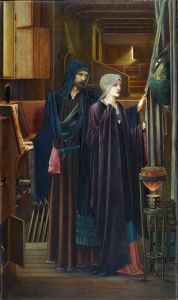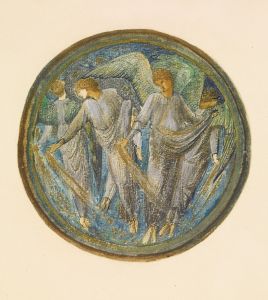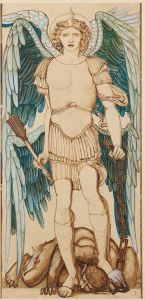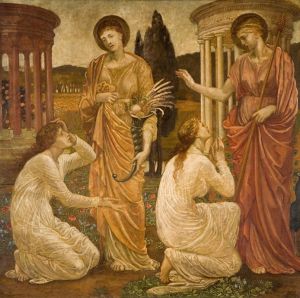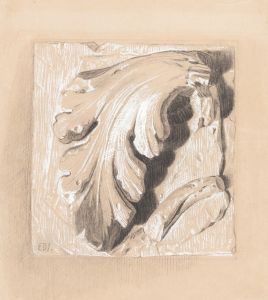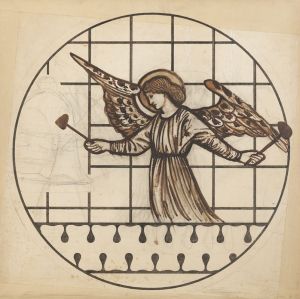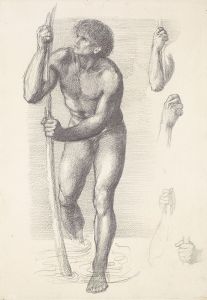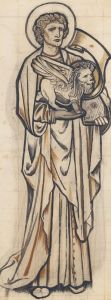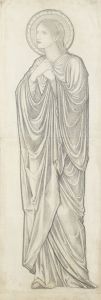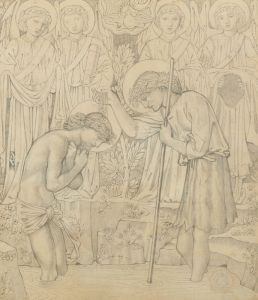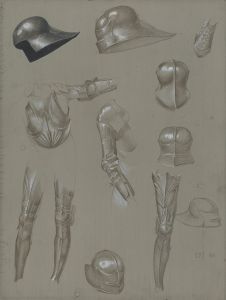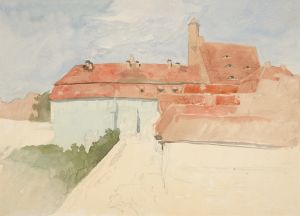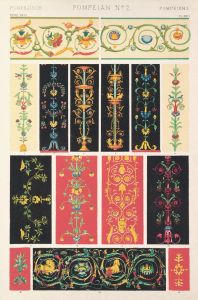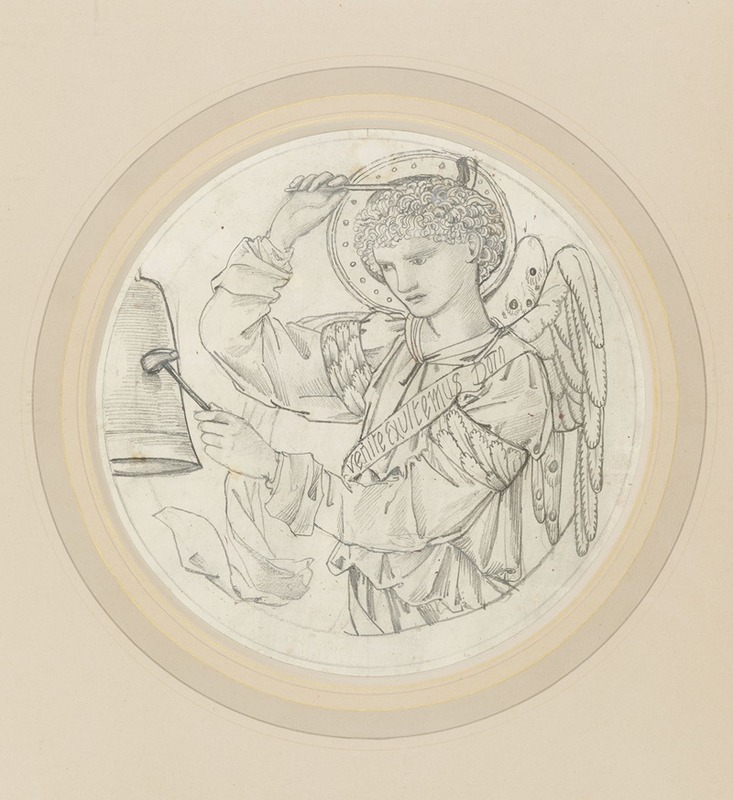
Angel Playing on Bells III
A hand-painted replica of Sir Edward Coley Burne-Jones’s masterpiece Angel Playing on Bells III, meticulously crafted by professional artists to capture the true essence of the original. Each piece is created with museum-quality canvas and rare mineral pigments, carefully painted by experienced artists with delicate brushstrokes and rich, layered colors to perfectly recreate the texture of the original artwork. Unlike machine-printed reproductions, this hand-painted version brings the painting to life, infused with the artist’s emotions and skill in every stroke. Whether for personal collection or home decoration, it instantly elevates the artistic atmosphere of any space.
"Angel Playing on Bells III" is a painting by the British artist Sir Edward Coley Burne-Jones, a prominent figure associated with the Pre-Raphaelite Brotherhood and the later Aesthetic Movement. Burne-Jones was known for his romantic and often mystical subjects, and his works frequently depicted themes drawn from mythology, literature, and religion.
The painting "Angel Playing on Bells III" is part of a series of works that feature angelic figures engaged in musical activities. Burne-Jones had a profound interest in the depiction of angels, which he often portrayed as ethereal and otherworldly beings. This particular painting showcases an angel playing a set of bells, a motif that Burne-Jones revisited in various forms throughout his career.
Burne-Jones's style is characterized by its attention to detail, use of rich colors, and a sense of dreamlike beauty. In "Angel Playing on Bells III," these elements are evident in the delicate rendering of the angel's features and the intricate design of the bells. The composition reflects Burne-Jones's fascination with the harmonious blend of music and visual art, a theme that resonated with the broader ideals of the Aesthetic Movement, which emphasized art for art's sake and the pursuit of beauty.
The angel in the painting is depicted with serene expression and graceful posture, embodying the tranquility and purity often associated with celestial beings. The use of light and shadow in the painting enhances the ethereal quality of the scene, creating a sense of depth and movement. The background is typically subdued, allowing the figure of the angel and the bells to stand out as the focal point of the composition.
Burne-Jones's work was heavily influenced by medieval art and the Gothic revival, which is evident in the stylized forms and the spiritual undertones of "Angel Playing on Bells III." His interest in medieval themes was shared by other members of the Pre-Raphaelite Brotherhood, who sought to return to the detail, color, and complexity of pre-Renaissance art.
The painting is part of a broader body of work by Burne-Jones that explores the intersection of the divine and the human, often through the lens of music and art. His angels are not merely religious symbols but are also representations of ideal beauty and the transcendent power of art.
"Angel Playing on Bells III" reflects Burne-Jones's mastery of technique and his ability to convey emotion and narrative through visual means. The painting is a testament to his enduring legacy as one of the leading figures of the Pre-Raphaelite and Aesthetic movements, and it continues to be appreciated for its beauty and craftsmanship.
While specific details about the provenance or current location of "Angel Playing on Bells III" may not be widely documented, Burne-Jones's works are held in numerous public and private collections around the world, including major institutions such as the Tate Britain and the Birmingham Museum and Art Gallery. His paintings remain influential and are celebrated for their contribution to the development of 19th-century British art.





